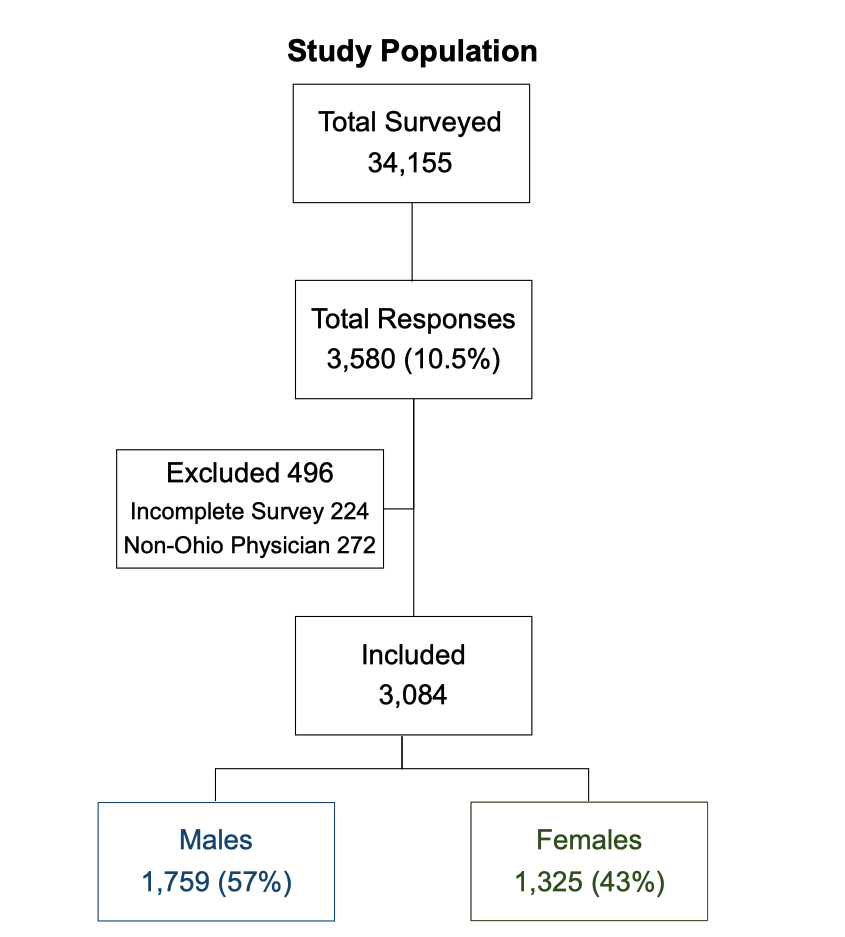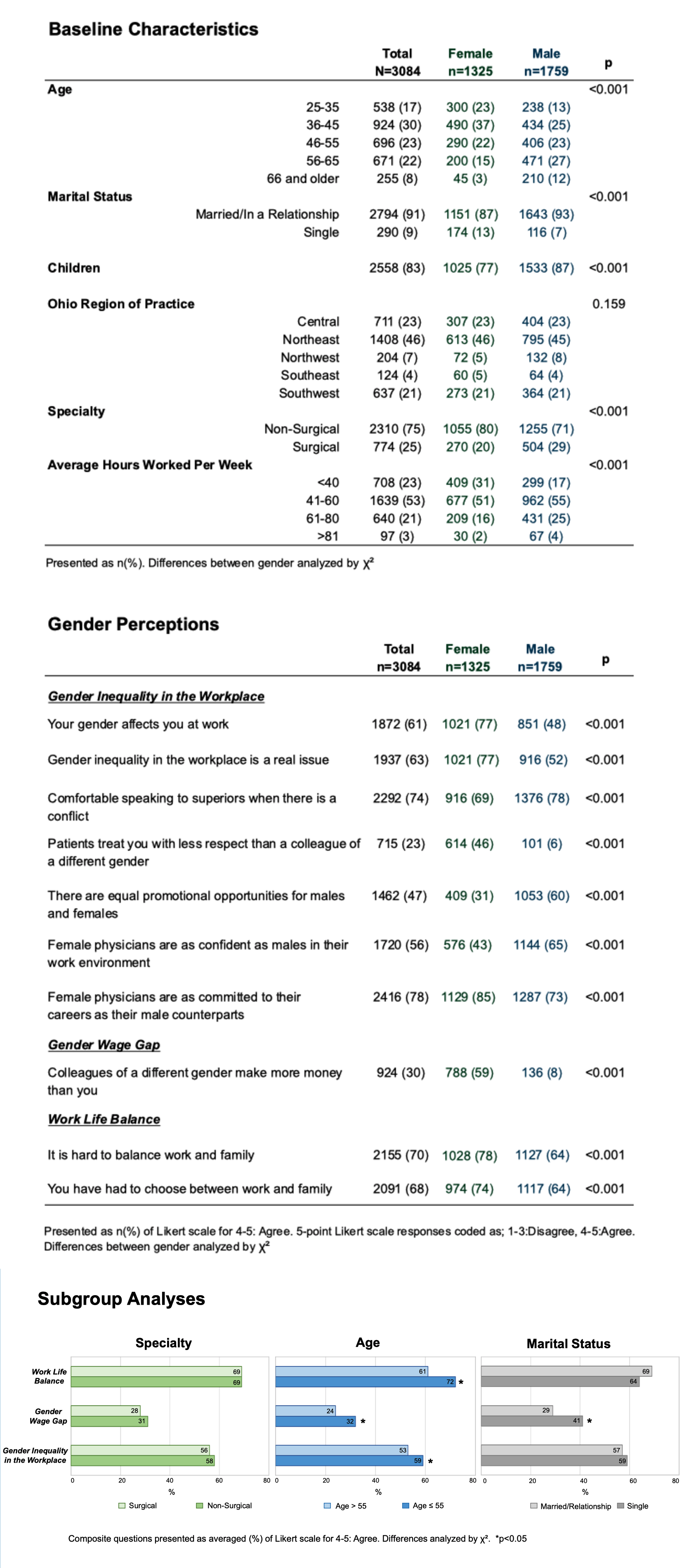Background: There currently exists a gender wage gap between physicians. A study of salary differences between male and female academic physicians across 24 US institutions concluded that there is a significant difference even after accounting for factors such as age, experience, specialty, and faculty rank.1 A 2018 Medscape physician compensation report calculated the gender wage gap at 18%. This wage gap is even more pronounced among internal medicine subspecialties where male specialists earn 36% more than their female counterparts.2 We present the results of a statewide survey that describes the current gender perceptions of physicians in the state of Ohio. The primary objective is to compare gender perceptions between males and females. The secondary objectives include subgroup analyses based on age, specialty, and marital status.
Methods: We conducted an anonymous survey of all physicians licensed under the State Medical Board of Ohio. The survey tool covered three main categories; gender inequality in the workplace, gender wage gaps, and work-life balance.
Results: A total of 34,155 physicians were surveyed with a response rate of 10.5%. 496 surveys were excluded as they were incomplete or completed by physicians outside of Ohio, leaving us with a final sample size of 3,084. The study population was comprised of 57% males and 43% females. Baseline characteristics- including age, marital status, number of children, specialty, and hours worked per week – were not equally distributed between genders. Statistically significant differences in gender perceptions were shown for all survey questions relating to gender equality in the workplace, the gender wage gap, and work-life balance. (See attached table) The majority of physicians have reported having struggled with work-life balance. Subgroup analyses based on specialty, age and marital status were performed. Of note, gender perceptions among physicians ≤55 years old significantly differed from those >55 years old.
Conclusions: Maintaining a healthy work-life balance continues to be a struggle for most physicians. The results of our study add to our understanding of variability in perceptions of workplace opportunities and pay parity by gender. Female physicians have a significantly more negative perception of gender-based differences in wage gaps, workplace conditions, and work-life balance. Since the majority of physician leaders in healthcare are men, it is important to call out these differences in order to level set the understanding of these issues by the healthcare community.


